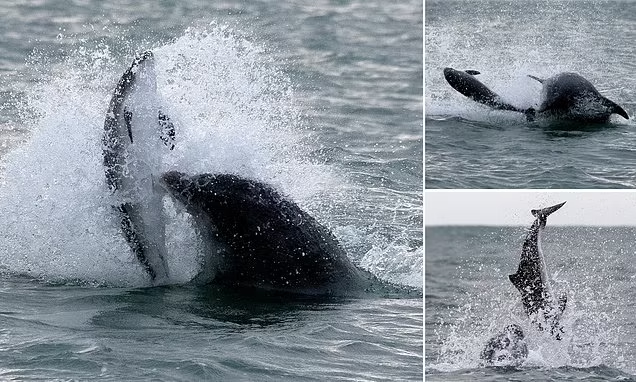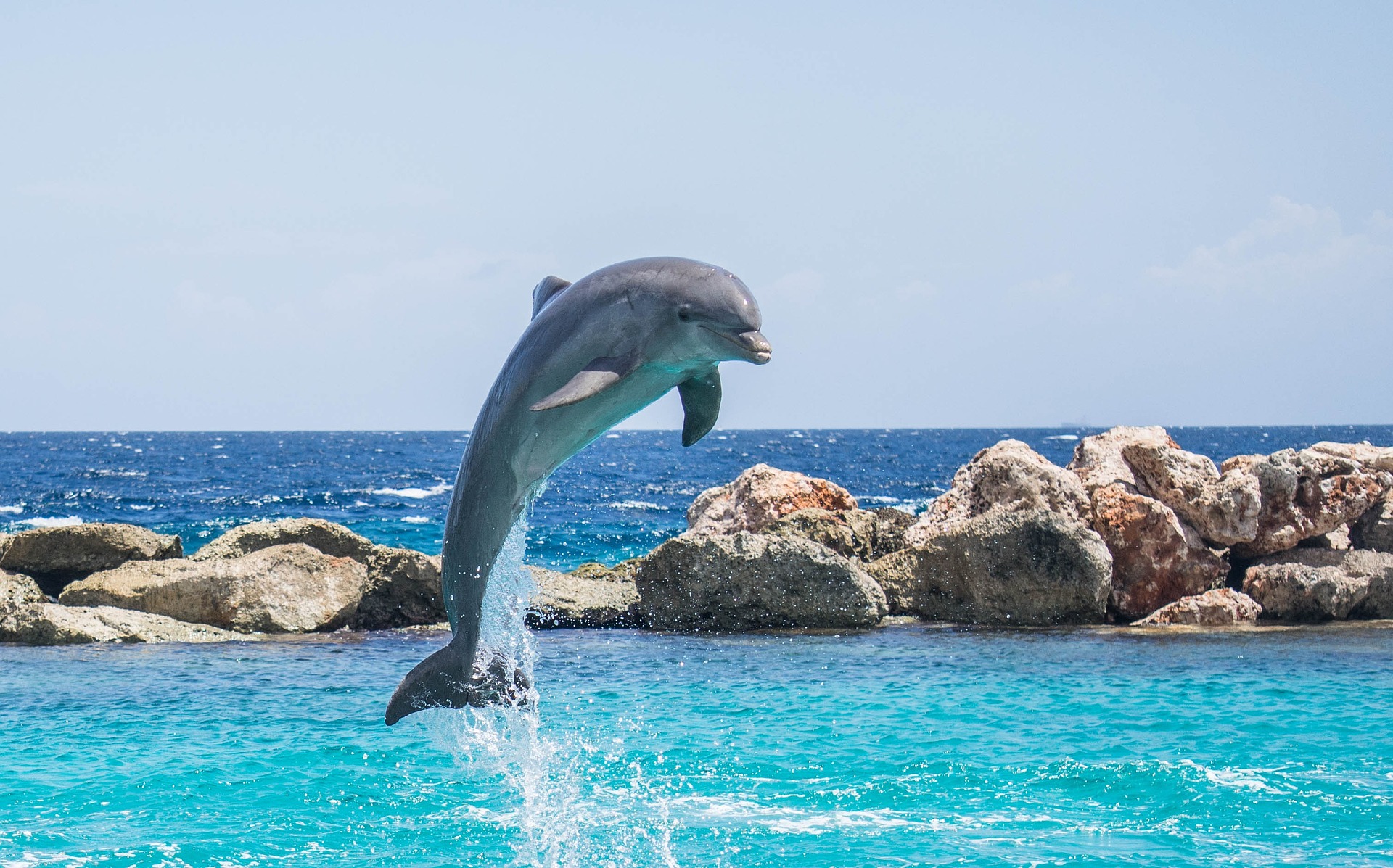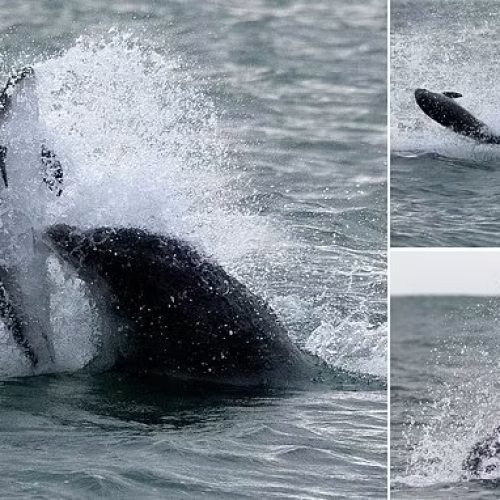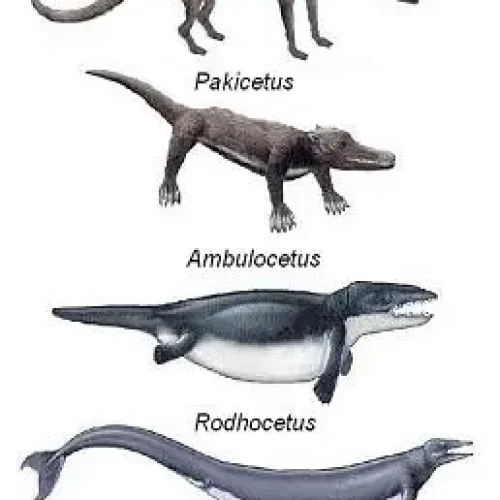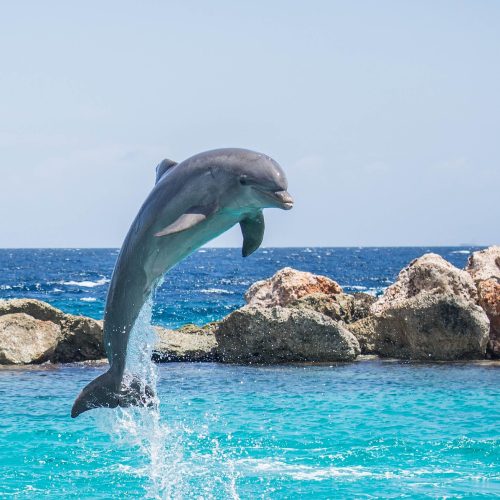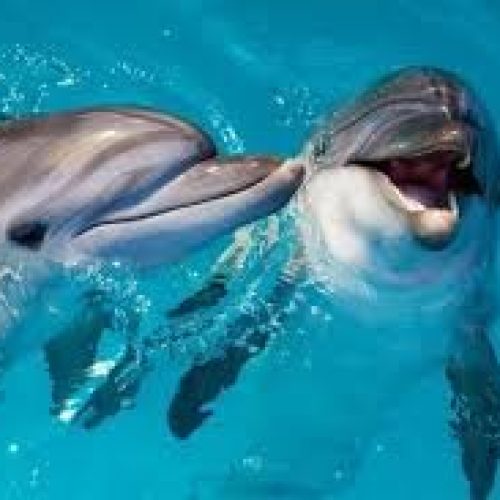In this article
HIDDEN TREASURES: THE WORLD’S RAREST DOLPHINS
Rarity in dolphin species isn’t solely about population counts. While numbers play a crucial role, other factors contribute to a species’ vulnerable status:
• Population size: Undoubtedly the most critical measure, with some species numbering only in the hundreds.
• Geographic range: Species confined to specific regions face heightened risks.
• Genetic diversity: A limited gene pool can spell trouble for long-term survival.
Let’s dive into the world’s rarest dolphins, exploring their unique characteristics and the challenges they face.
Topping the list of rare dolphins is the Maui’s dolphin, a subspecies of Hector’s dolphin found only off New Zealand’s North Island.
With a population estimated at fewer than 50 individuals, these small cetaceans are teetering on the brink of extinction.
Maui’s dolphins are instantly recognizable by their rounded dorsal fins, reminiscent of Mickey Mouse ears.
Their diminutive size – adults rarely exceed 1.7 meters in length – belies their importance to New Zealand’s marine ecosystem and cultural heritage.
In the warm waters of Mexico’s Gulf of California lives the vaquita, often called the world’s rarest marine mammal. Recent estimates suggest fewer than 10 individuals remain in the wild, making them critically endangered.
Vaquitas are small porpoises, reaching lengths of about 1.5 meters. Their distinctive dark rings around the eyes and lips give them an almost cartoonish appearance.

Unfortunately, their limited range makes them highly susceptible to fishing nets meant for other species.
While not as rare as the Maui’s dolphin or vaquita overall, certain populations of Irrawaddy dolphins are among the world’s most endangered.
These unusual-looking dolphins inhabit coastal areas, estuaries, and rivers across Southeast Asia.
The Mekong River population is particularly vulnerable, with fewer than 100 individuals remaining.
These dolphins face threats from dam construction, pollution, and accidental entanglement in fishing gear.
1 – MĀUI DOLPHIN: NEW ZEALAND’S CRITICALLY ENDANGERED ICON
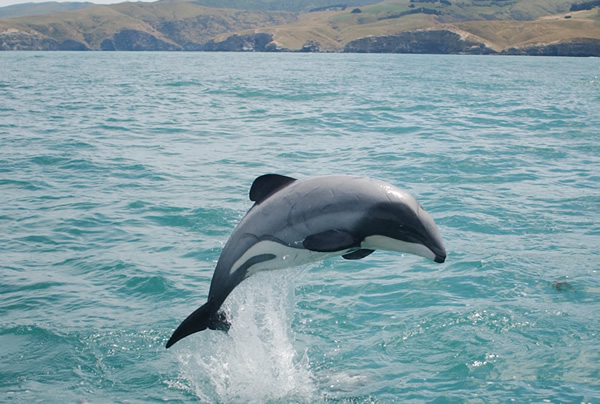
Off the west coast of New Zealand’s North Island swims the Māui dolphin, a subspecies of Hector’s dolphin and quite possibly the rarest marine dolphin in the world.
With a population estimated at fewer than 50 individuals, these diminutive cetaceans are in dire straits.
Key facts about Māui dolphins:
• Length: Typically 1.2-1.5 meters
• Weight: Around 50 kilograms
• Distinctive features: Rounded dorsal fin resembling a Mickey Mouse ear
The primary threats to Māui dolphins stem from human activities. Gillnet fishing and trawling pose significant risks, as these small dolphins often become entangled in fishing gear.
Despite increased protection measures, their numbers continue to dwindle, prompting urgent conservation efforts.
2 – HECTOR’S DOLPHIN: THE MĀUI’S SLIGHTLY MORE ABUNDANT COUSIN
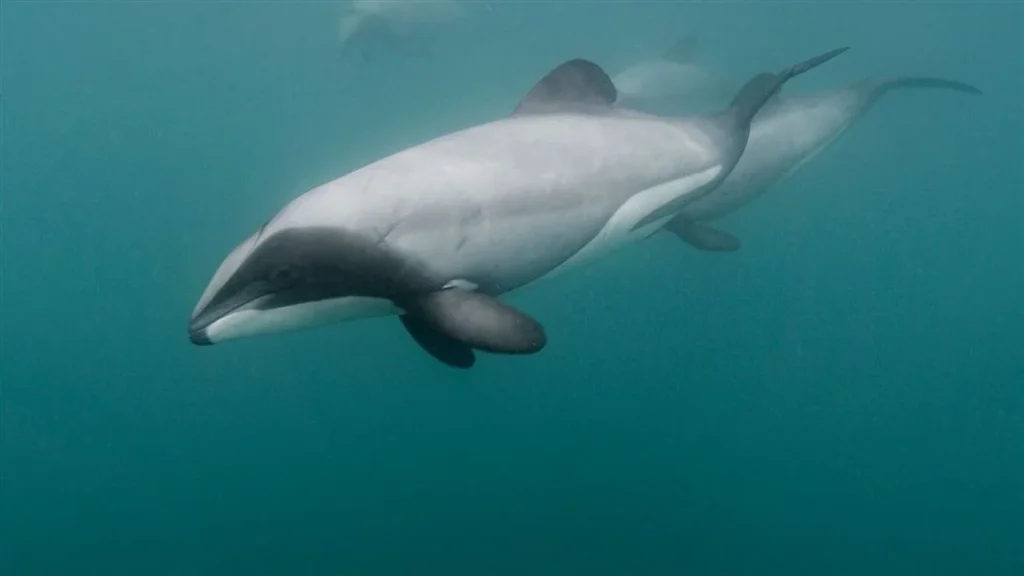
While not quite as rare as their Māui relatives, Hector’s dolphins remain a species of serious concern. Endemic to New Zealand’s coastal waters, these dolphins face many of the same challenges as the Māui subspecies.
Population estimates for Hector’s dolphins:
• East Coast South Island: Approximately 9,000 individuals
• West Coast South Island: Around 3,000 individuals
• South Coast South Island: Fewer than 200 individuals
Hector’s dolphins are known for their distinctive rounded dorsal fins and small size, making them one of the most petite dolphin species.
Conservation efforts include the establishment of marine protected areas and fishing restrictions, but the species remains vulnerable to human impacts.
3 – IRRAWADDY DOLPHIN: FRESHWATER SPECIALIST ON THE BRINK

The Irrawaddy dolphin inhabits coastal areas, estuaries, and rivers across Southeast Asia.
While its overall population is larger than that of Māui or Hector’s dolphins, certain subpopulations are critically endangered.
Particularly vulnerable Irrawaddy dolphin populations:
• Mekong River: Fewer than 100 individuals
• Mahakam River (Indonesia): Around 80 individuals
• Ayeyarwady River (Myanmar): Approximately 60 individuals
These freshwater populations face unique challenges. Habitat degradation, dam construction, and entanglement in fishing gear all contribute to their decline.
The Irrawaddy dolphin’s unusual appearance – with a rounded head and visible neck creases – makes it a charismatic species for conservation efforts.
Conservation initiatives for these rare dolphins often involve a multifaceted approach:
• Implementing fishing gear modifications to reduce bycatch
• Establishing protected areas in critical habitats
• Conducting research to better understand population dynamics
• Engaging local communities in conservation efforts
SPOTLIGHT ON THE MĀUI DOLPHIN: A SPECIES ON THE EDGE
Māui dolphins are a subspecies of Hector’s dolphin, endemic to New Zealand waters. These charismatic cetaceans captivate with their unique appearance and behaviors:
• Size and appearance: Māui dolphins are remarkably small, rarely exceeding 1.7 meters in length. Their most distinctive feature is a rounded dorsal fin, often likened to a Mickey Mouse ear.
• Coloration: Their bodies display a striking pattern – dark grey backs, white bellies, and black eye patches that give them an almost masked appearance.
• Habitat: Māui dolphins inhabit a narrow strip of coastal waters, rarely venturing more than 7 kilometers offshore or into waters deeper than 20 meters.
These dolphins live in small, close-knit pods, typically consisting of 2-8 individuals.
They’re known for their playful nature, often seen riding waves and engaging in acrobatic displays. However, their restricted range makes them extremely vulnerable to human activities.
Threats to survival: a perfect storm of challenges
The critically low numbers of Māui dolphins result from a combination of factors, each compounding the species’ struggle:
Fishing practices: The greatest threat comes from entanglement in fishing gear, particularly gillnets and trawl nets.
These indiscriminate fishing methods have devastating consequences for Māui dolphins, who can become trapped and drown.
Disease and pollution: A small gene pool leaves Māui dolphins susceptible to diseases. Additionally, toxoplasmosis, spread by cat feces washing into the ocean, has emerged as a significant concern.
Water pollution from coastal development further stresses their fragile habitat.
Slow reproduction: Māui dolphins reach sexual maturity late and reproduce slowly. Females typically give birth to a single calf every 2-4 years, making population recovery a lengthy process even under ideal conditions.
Conservation efforts: racing against time
The plight of the Māui dolphin has sparked intense conservation efforts:
• Fishing restrictions: The New Zealand government has implemented a ban on set net and trawl fishing in core Māui dolphin habitat. However, debate continues on whether these measures go far enough.
• Research and monitoring: Scientists employ acoustic monitoring and genetic sampling to track the population and gain crucial insights into Māui dolphin behavior and distribution.
• Public awareness: Education campaigns aim to foster community support for conservation measures and promote responsible coastal activities.
Despite these efforts, the future of the Māui dolphin remains uncertain. Their recovery requires a delicate balance between human needs and environmental protection.
A symbol of hope and urgency
The Māui dolphin’s struggle embodies broader challenges facing marine conservation.
Their fate is inextricably linked to our own actions and choices.
As we work to protect these remarkable creatures, we’re not just saving a single species – we’re safeguarding the health of our oceans and the countless other organisms that call them home.
CONSERVATION IN ACTION: SAVING THE RAREST DOLPHINS
From the chilly waters of New Zealand to the tropical rivers of Southeast Asia, dedicated conservationists work tirelessly to ensure these marine marvels have a future.
The International Union for Conservation of Nature (IUCN) Red List serves as a crucial tool in dolphin conservation. This comprehensive database provides:
• Detailed assessments of population trends
• Identification of key threats
• Recommendations for conservation actions
For species like the Māui dolphin, inclusion on the Red List as “Critically Endangered” has spurred increased international attention and funding for protection efforts.
The Convention on International Trade in Endangered Species (CITES) plays a vital role in safeguarding rare dolphins from exploitation.
By regulating or prohibiting trade in these animals and their parts, CITES helps combat a potential threat to their survival.
All cetaceans, including the rarest dolphin species, are listed under CITES Appendix I or II, affording them the highest levels of protection from international trade.
Conservation of rare dolphins often requires expertise and resources beyond what any single country can provide. International partnerships facilitate:
• Exchange of scientific data and research methodologies
• Sharing of best practices in conservation management
• Coordinated monitoring of transboundary populations
For instance, efforts to protect the Irrawaddy dolphin in the Mekong River involve collaboration between Cambodia, Laos, and international NGOs.

